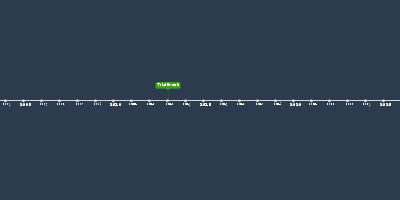Cold War Timeline Part 2
Category: Other
Updated: 30 Apr 2021
Created by Gaurav Vemireddi and Jay Bhalala
Contributors
Created byGaurav Vemireddi
Attachments
Events
De-stalinization :
(1956)
Nikita Khrushchev started this reform to
discredit Stalin. This also destroyed the Soviet
Union’s image on a smaller scale.Sputnik launched :
(October 4, 1957)
The first ever satellite that
was launched into orbit around the Earth was
launched by the Soviet Union, marking the
beginning of the Space Race between the US
and the Soviet UnionFidel Castro becomes leader of Cuba :
(February 16, 1959)
Led the campaign to overthrow the dictatorship
created by Fulgencio Batista and established
himself as prime minister of Cuba after that
had been accomplished. Created a Marxist
government and sided with the Soviets during
the Cold War. Allowed the Soviets to bring their
nuclear missiles to Cuba to be stored there in
preparation for war with the US.Construction of the Belin Wall :
(August 13, 1961)
Because West Germany was thriving in their
democratic lifestyles, many people from East
Germany moved there. Because this was taking
a toll on their economy, East Germany
constructed this wall to keep them in East
Germany.Prague Spring :
(January 5 - August 21, 1968)
A period of time in Czechoslovakia, during
which reforms and the reform movement
reached their highest point. Granted more
rights for Czechoslovakian citizens and helped
in the loosening of media restrictions in order
to decentralize power in the state and give
more rights to individualsBrezhnev Doctrine :
(September 1968)
Because leaders of the Soviet Union were
scared of the Prague Spring’s independence,
they used this doctrine to justify Leonid
Brezhnev’s actions. It said that if one of its
members went against another socialist
country, the Soviet Union and its allies would
interfere.SALT I (Strategic Arms Limitation Treaty) :
(1972)
A treaty signed by President Nixon and Soviet
leader Leonid Brezhev to reduce and control
the number of intercontinental missiles that
each country could haveSolidarity :
(1980)
An anti-bureaucratic movement in
Poland that used civil resistance to fight for
better rights for individuals and workersStrategic Defense Initiative(Star Wars) :
(March 23, 1983)
A system created by the United States that was
said to be able to destroy any Soviet missile
heading towards the US or any of the US’s
allies. Caused the Soviets to fear the Americans
more, as they lacked a system like this, and also
prompted the Soviets to feel as though an arms
race in space was being started by the US.1987 INF Treaty :
(December 8, 1987)
A treaty created between the
United States and the Soviet Union that
dictated the use of intermediate-range nuclear
as prohibited, and released much of the
tensions between both countries, as well as
around the world, and suppressed the
supporters of war from the US and the Soviet
Union.Fall of Berlin Wall :
(November 9, 1989)
The Communist party of
East Germany said that from this day forward
any East Germans could freely pass into West
Germany. This caused many East Germans to
go into West Germany freely, but also caused
some to try to break down the wall, which
partially worked.Collapse of the Soviet Union :
(December 26, 1991)
Many factors led to the end of the Soviet Union,
such as reforms which spread as democracy
began to spread in Europe, destroying the
Warsaw Pact. New leaders and systems also led
to challenges, contributing to destroying the
Soviet Union.Creation of Warsaw Pact:
(May 14, 1955)
The communist bloc got together to go against
the creation of NATO. They put their army
leaders in the Soviet Union capital and
combined forces.-
Hot
--
Cold
--
Hot
--
Cold
-Periods
Vietnam War :
(1955-1975)
Because the South Vietnam leader, Ngo Dinh Diem, was favoring Catholics over Buddhists, many
protests occurred, and because the U.S. did not want China to turn communism, they sent troops
to support South Vietnam.Détente :
(1960's - 1979)
A time of relaxation between the United States and the Soviet Union, after the
Cold War, in which they signed treaties, like SALT, with each other and helped each other
through times of struggle, but never conflicted each other during this time periodCuban Missile Crisis :
(October 16 - October 28, 1962)
A standoff between the US and the Soviet Union during which the
Soviets brought nuclear Soviet missiles into Cuba, in preparation to attack the US, that
brought tensions between the US and the Soviet Union to the brink of starting a very
powerful and deadly nuclear warRussian Invasion of Afghanistan :
(1979-1989)
This ended detente between the US and the Soviet
Union and greatly weakened the centralized Soviet
Union, and was a cause for its demise 12 years
after the invasionGlasnost :
(1986-1991)
Mikhail Gorbachev’s
policy of giving more freedom.
This freedom was mainly
applicable to political processes
and opening up Soviet society.
Comments